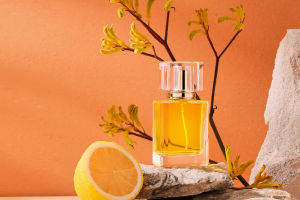Hey Lykkers! Essence is an integral part of both culinary and non-culinary creations, enhancing flavors, fragrances, and experiences in various ways.
Let’s take a look at the diverse world of essence, from food flavorings to essential oils.
Understanding Essence
Essence refers to a concentrated extract that contains the essential properties of a particular ingredient. Typically, essences are highly potent and come in small quantities due to their intense flavor or fragrance. Essences can be used in cooking, perfumes, aromatherapy, and even cleaning products. They are either derived from natural sources or created synthetically to replicate the desired effect.
Types of Essence for Cooking
In the culinary world, essences are used to add specific flavors to dishes, desserts, and drinks. Here are some common types of edible essences:
1. Vanilla Essence: One of the most popular essences used in baking, vanilla essence adds a warm, sweet, and aromatic flavor to cakes, cookies, custards, and other desserts. It’s often used as a substitute for pure vanilla extract but can also be made synthetically. Natural vanilla essence is derived from vanilla beans, while artificial versions mimic the taste.
2. Almond Essence: Almond essence provides a nutty, sweet flavor that’s particularly strong. A little goes a long way with this essence, making it perfect for pastries, marzipan, cookies, and cakes. It’s a must-have for anyone who loves baking almond-flavored treats.
3. Lemon Essence: For a bright, citrusy flavor, lemon essence is an excellent choice. It adds the tang of fresh lemons without the acidity of lemon juice, making it ideal for use in desserts like cakes, and puddings. It can also be used in savory dishes to brighten up sauces and dressings.
4. Rose Essence: Common in Middle Eastern and South Asian cuisine, rose essence provides a delicate floral flavor to desserts and drinks. It’s often used in making rose-flavored ice creams, syrups, or sweets like Turkish delight and Indian desserts like Gulab Jamun or Rasgulla.
5. Mint Essence: Mint essence is perfect for adding a refreshing, cool taste to ice creams, chocolates, and beverages. It’s popular in both desserts and savory dishes and pairs well with chocolate for that classic mint-chocolate combination.
6. Orange Essence: Like lemon, orange essence is used to add a sweet and zesty orange flavor to a variety of dishes. It works particularly well in cakes, glazes, and frostings, as well as savory marinades and sauces.
Fragrance Essences: Beyond the Kitchen
Essences aren’t limited to the kitchen. Many are used in aromatherapy, perfumes, and cosmetics due to their rich fragrances. Here are some common types of fragrance essences:
1. Lavender Essence: Lavender essence is known for its calming and soothing properties. It’s often used in candles, bath products, and essential oils. Lavender’s sweet, floral scent helps to relax the mind and promote sleep, making it a popular choice for bedtime rituals.
2. Eucalyptus Essence: Eucalyptus essence has a sharp, refreshing scent that’s commonly used in cleaning products, medicinal oils, and air fresheners. Its strong, camphorous fragrance makes it ideal for clearing congestion and refreshing spaces.
3. Sandalwood Essence: Sandalwood essence has a woody, earthy scent that is both grounding and relaxing. Often used in incense, perfumes, and aromatherapy oils, sandalwood is perfect for creating a peaceful atmosphere.
4. Jasmine Essence: Known for its intoxicating floral aroma, jasmine essence is often used in high-end perfumes, scented candles, and beauty products. Its fragrance is uplifting and sensual, making it a favorite in aromatherapy and luxury goods.
5. Tea Tree Essence: Tea tree essence, derived from the leaves of the tea tree plant, is famous for its medicinal properties. It has a sharp, earthy scent and is commonly used in skincare products to treat acne, cuts, and infections due to its antibacterial qualities.
Essential Oils: The Purest Form of Essence
Essential oils are another form of essence, but they are typically more concentrated and potent. These oils are extracted directly from plants and are used for various purposes, including aromatherapy, natural remedies, and beauty treatments. Here are a few of the most popular essential oils:
1. Peppermint Essential Oil: Known for its invigorating and cooling sensation, peppermint essential oil is frequently used to relieve headaches, boost energy, and soothe sore muscles. Its sharp, minty scent is also popular in candles and room sprays.
2. Lemon Essential Oil: Lemon essential oil is commonly used for its fresh, clean scent. It has antibacterial and antiviral properties, making it an effective natural cleaner for the home. Its bright fragrance can also uplift your mood and reduce stress.
3. Rosemary Essential Oil: Rosemary essential oil has an herbal, woody scent that’s both stimulating and refreshing. It’s often used in shampoos, hair treatments, and skincare due to its ability to promote circulation and hair growth.
4. Frankincense Essential Oil: Frankincense is known for its rich, balsamic scent and its use in meditation and spiritual practices. It’s believed to reduce anxiety and promote relaxation, making it a favorite in aromatherapy.
5. Ylang Ylang Essential Oil: With its sweet, floral scent, ylang-ylang is often used in perfumes and beauty products. It’s also known for its calming and aphrodisiac properties, making it a popular choice in massage oils and aromatherapy.
How to Use Essences in Your Daily Life
Essences, whether in the form of flavorings or essential oils, are incredibly versatile. In the kitchen, they enhance the taste of your dishes and add complexity to your cooking. In your home, they can create a relaxing atmosphere, uplift your spirits, or even help you focus. Here are some tips on how to incorporate essences into your daily routine:
1. Cooking: Use food essences sparingly in your baking or cooking to add a burst of flavor without overwhelming your dish. A drop or two of vanilla, almond, or citrus essence can elevate your cakes, cookies, or sauces.
2. Aromatherapy: Add a few drops of essential oils like lavender or peppermint to a diffuser to fill your home with calming or energizing scents. You can also mix essential oils with carrier oils for massage or skincare.
3. Beauty and Skincare: Many essences, particularly essential oils, can be used in your skincare routine. Add a drop of lavender or tea tree oil to your moisturizer to help soothe the skin or treat acne.
Their versatility, potency, and variety mean that there’s an essence for every need—be it flavor, fragrance, or therapeutic purposes. With just a few drops, you can transform your environment, uplift your mood, or enhance your culinary creations.


